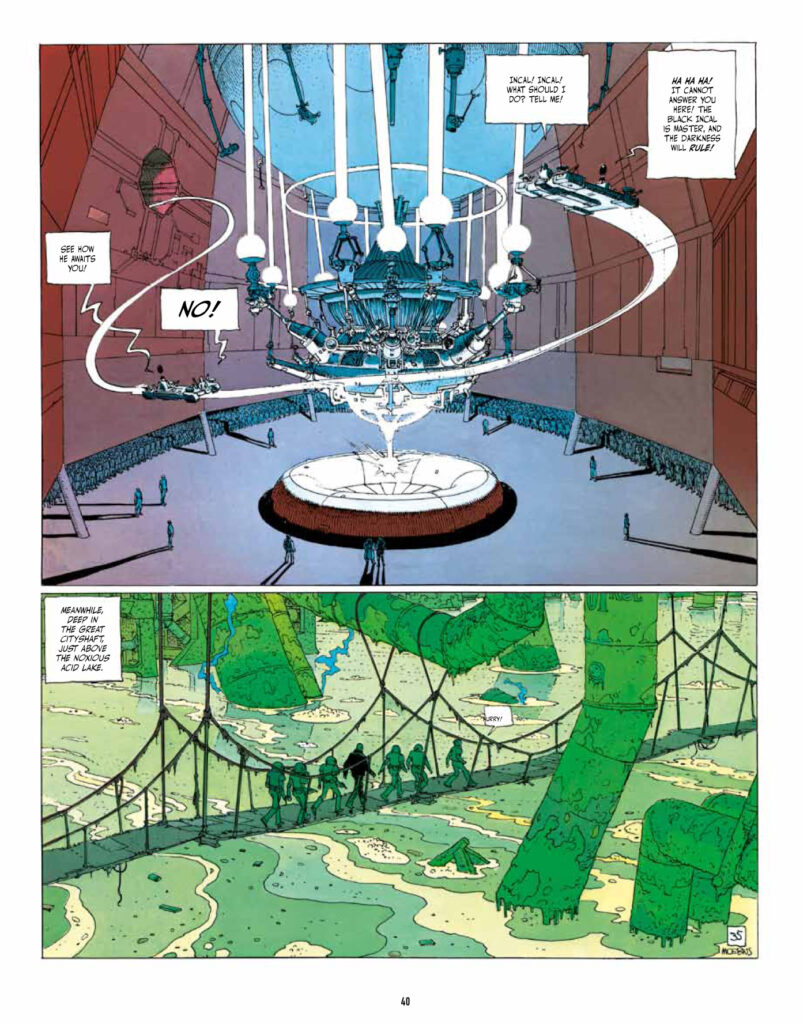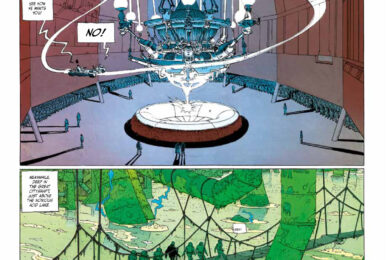Mat Colegate writes:
So a busy month in comics and a load of hooks to hang this here column on. Part of me wanted to discuss the curious fan-reaction to Dark Knight Rises, which seems to have split its audience in two (very broadly, the Batman fans of my acquaintance seemed to enjoy it, whilst the lovers of Nolan’s trilogy, and Dark Knight in particular, seemed utterly nonplussed), while another part of me wanted to start out by marking the passing away of Joe Kubert, one of comic art’s true titans both as an artist and a teacher. (For a proper obit see here. Needless to say, he will be missed).
However, one event has stayed with me and I really wanted to give it a mention, in a slightly sentimental magicofthecomics kind of way. A few days ago I was with a couple of my band mates working on an UPCOMING TOP SECRET PROJECT (I believe it should be referred to as a U.T.S.P). In order to get some visual inspiration I was telling my two buds about some of Jack Kirby’s lesser known work, in particular his utterly bonkers, strangely haunting and very, very loose interpretation of Stanley Kubrick’s hippie space epic 2001: A Space Odyssey. This being the age of the Mega-Computer, where every home has a HAL in the front room, we did a quick image search and within micro-seconds the screen was filled with the work of the much missed Marvel architect.
Now, I’m an old head, so none of this stuff was new to me. I’ve been loving Kirby for many years, and can barely even remember my first impressions of his work. So I was pleasingly surprised at my friend’s reactions, which, to put it blankly, came as close to awe as you can see on the faces of two beanpole skinny, super-jaded post-hipsters. They were agog at the beauty and wonder captured in those seemingly naïve drawings. Drawings done for commercial reasons, under strict deadlines, and comparatively sidelined in relation to his work on the more famous franchises which should, by rights, bear his name. I sat there grinning from ear to ear, like a shark that drinks five percent lager, as they greeted image after image with unsuppressed whoops of joy, laughter, fucking-hell-look-at-that and, obviously, attempts to read the caption boxes in SILLY BOOMING VOICES. It was a beautiful and honest tribute to The King and to the magic of comics in general and I’ll be smiling when I think about it for a good long time. On that slightly sentimental note, whaddayasay? HERE COMES COMICS.
The Incal: Classic Collection
(Alexandro Jodorowsky and Moebius, pub. Humanoids (US), SelfMadeHero (UK))
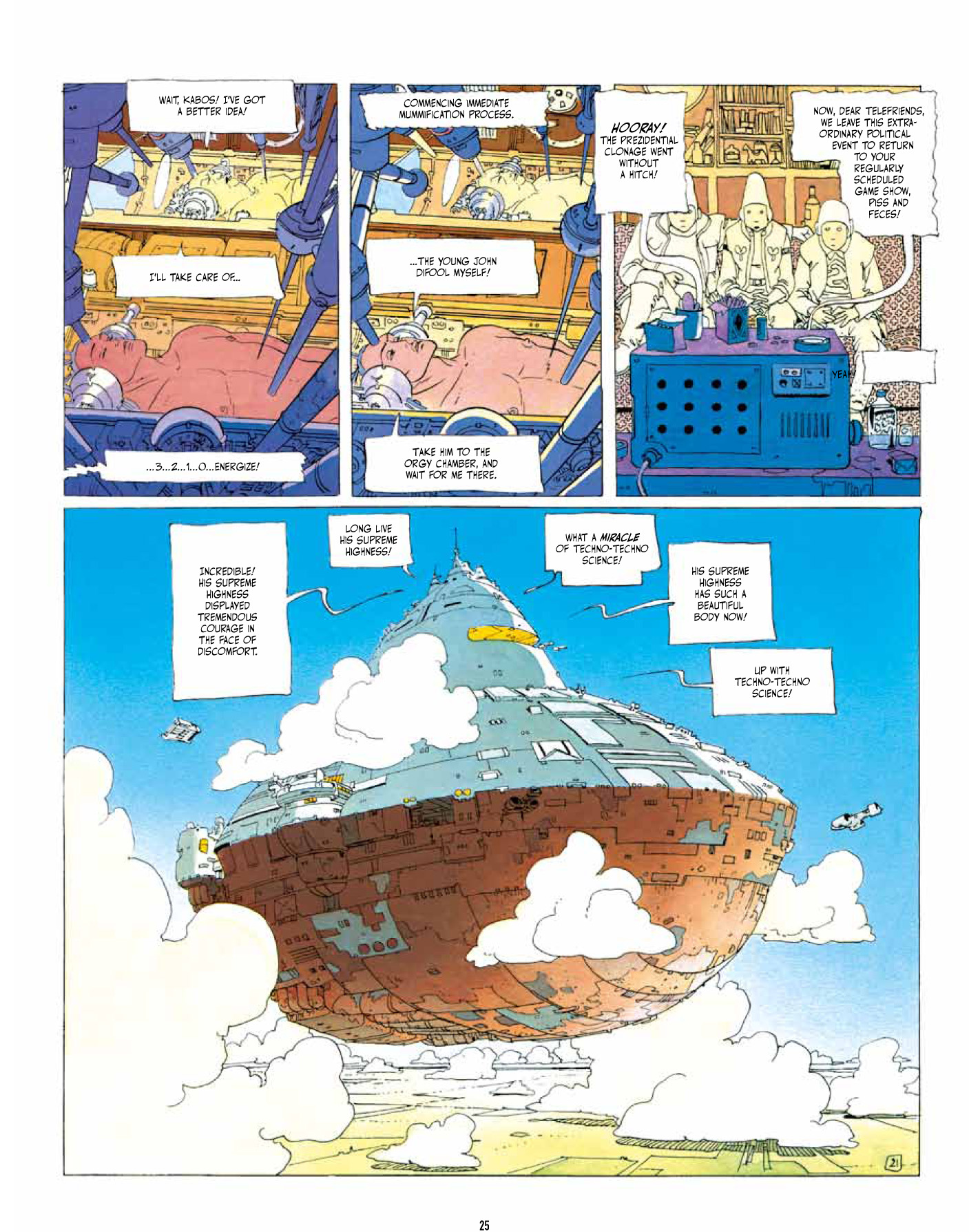
Now this is a sexy, sexy thing. Humanoids’ complete hardbacked collection of Jodorowsky and Moebius’s The Incal is one of those volumes that makes you wish that your reading room had more oak lining, that makes you want to read it in a piazza whilst sipping a gin and vermouth, that makes you hope for an escaped bull to charge you so you could use it as a cudgel. Heavy, beautifully reproduced and dense with the aniseed scent of pure class, it’s one of the most satisfying repackagings I’ve seen in some time, for a work that more than deserves the deluxe treatment.
For those unfamiliar with The Incal, it’s the legendary sci-fi collaboration between Alejandro ‘Holy Mountain’ Jodorowsky and recently departed French master Moebius. Plot wise, well, it’s written by Jodorowsky, innit? It’s batshit mental.
The story barrels along, supporting the weight of its mysticism-soaked metaphors through pure damn-the-torpedoes chutzpah. Everything has some kind of oblique resonance. All the major characters represent one of the major arcana of the tarot pack (the leaad character’s called John DiFool, for the love of The Priestess!) and most of the conflicts are solved by that classic pretentious sci-fi conceit of having the characters sit down to a bit of meditating and revealing of their true natures.
It’s damn good fun, of course, but the main reason it enjoys such classic status is because it affords an opportunity to see one of the greatest artists in all comics history at the absolute peak of his game. Make no mistake, Moebius draws the hell out of this.
Every situation visited upon the hapless characters is fully realised and breathtaking in scale. From trips to gigantic underwater cities and street fights in filth-encrusted urban locales, to, y’know, giant talking pyramids floating in space. It’s this sense of scale that really blows the head. Sitting down to read it this time, I was struck by how Moebius keeps a perfect sense of proportion, so that even the most insignificant members of the massive crowd scenes seem rich in life, to have realised back stories of their own and reasons for being where they are.
Page layout, character design and narrative flow combine to give a perfect example of comics at their absolute finest. Yeah, it’s a bit pricey but you won’t buy anything that will stay with you for as long, or that you’ll want to revisit as much. You might just have to put off oak lining the drawing room for a bit.
Forming Vol. 1
(Jesse Moynihan, pub. Nobrow Press)
Man, Jesse Moynihan is the best swearer in comics right now. His consistently foul-mouthed characters come up with so many fabulous uses of colourful language in Forming, the first volume in UK publisher Nobrow’s planned series of collections of his acclaimed web comic, that you find yourself writing them down for future use. ‘You probably fuck birds, you dirty gnome’ is my favourite at the moment, but it’s hard to think of a way to use that in context. I’m sure my time will come.
That the air’s being turned blue in service of an epic, complicated mythological story incorporating elements of early Christianity, Erik Von Danniken, the Dogon mythos and Mithraism amongst others serves to elevate this book even further above the norm. Moynihan’s got cartooning chops too. His use of simple nine panel grids providing a perfect guiding structure for when the plot gets complicated – which it does, seemingly every character is up to some daft scheme for fucking over, or fucking, some other sap – and his use of colour pops straight off the page, with some of the more psychedelic sequences achieving the bold compositional sincerity of a Jodorowsky movie. Indeed Jodorowsky seems to be a definite influence. Moynihan shares the director’s predilection for hurling fistfuls of monkey poop at sacred targets and somehow strengthening them through the abuse. By the end of Forming you’re hooked, intrigued and flicking back through the pages to get more yucks. Grab this one next payday and be dazzled.
The Furry Trap
(Josh Simmons, pub. Fantagraphics)
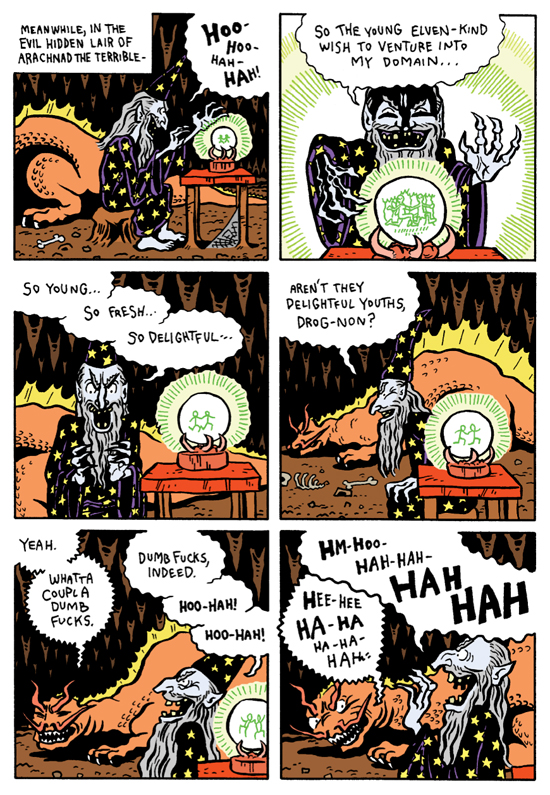
But now to darker business. I was previously unaware of Josh Simmons, my interest being piqued when I saw a couple of references to him on the Comics Journal website and to a bootleg Batman comic he created that was apparently the-most-awesomest-fucked-up-everest thing. Naturally, wanting to keep an eye on my favourite franchise, and seeing that said story was collected in this gorgeous volume, I asked the good folk at Fantagraphics if they’d mind skeedadling me over a copy. I was initially slightly worried by the collections tagline: Horror Stories (2004-2011).
Y’see, here’s an admission, despite my love of the horror in films, books and music and indeed it’s importance to the history of comics as a whole, I’m not an expert on horror comics. I missed out on all those lush EC collections and tended to write the genre off as something slightly kitschy. Y’know, good but in a Dracula AD 1972 kind of way. But this… well this knocked me on my ass. It starts out as good vicious fun. The Batman story is agreeably hideous and provides a proper critique on the character’s ‘Grim and Gritty’ remodelling, and a couple of the other stories that start the volume, In A Land Of Magic and Christmas Eve, are delightfully heartless and weird respectively, but then it starts spiralling down-ever-down-oh-Christ-where-will-this-end into some of the most depraved underbelly imaginings I’ve read since I first got hipped to Thomas Ligotti.
Put simply, Simmons understands the pace of nightmare. That hideous inexorability that stops you from screaming yourself awake, the slow thudding heartbeat of moment on terrifying moment that, if you think about it, comics are a perfect medium to provide. Picture after stationary picture dragging you down the page whether you like it or not. You can see the influences – many of the panels have that simplicity of line I associate with Moebius’s Arzach stories, the aforementioned Ligotti’s insistence that horror isn’t just something that happens to innocent bystanders – but his bright, crisp cartooning ensures that the nightmares never feel less than utterly fresh, while reminding you that true horror lies in the tiny details – a hand draped casually over a fireplace, a single light in a darkened room. Three stories in particular, Night of the Jibblers, Cockboneand Demonwood will, in their collisions of weird dignity, everyday menace, and all too explicit violence, stay with you long after you’ve snapped the book shut, and, if you’re sullied by a hankering for the pitch black stuff, leave you wanting a lot more.
Raw Power
(Josh Bayer, pub. Retrofit Comics)
Okay, apologies, this came out aaages ago, but had slipped under my radar until recently. I was drawn to Josh Bayer’s comics by the sheer beautiful slide and skate of his drawing, because that’s what this comic is full of, drawing. Messy, complex and slippery. Lines tangling over each other like sentient spaghetti, characters bubbling and slopping through the panels, tactile and scratchy and mean. He takes every rule of comics representation and crumples it in front of your eyes like a paper cup. His line is scratchy and inconsistent, his characters change their looks from panel to panel, yet you’re pulled along by his sheer energy and forcefulness, as well as the undeniable talent the guy exhibits. Normally having something non-musical compared to punk rock is a sure sign that the person making the comparison has absolutely no idea about what punk rock is or has ever been, but in this case it’s totally justified. That the story, such as it is, concerns a cat-masked vigilante with a violent grudge against our mohawked, glue sniffing brethren is neither here nor there. This book is alive with the rules that it’s breaking and that’s what punk means to me. Do yourself a favour and check this bad boy out.
Aug Stone writes:
The Celestial Bibendum
(Nicolas de Crécy, pub. Knockabout (UK), Humanoids (US))
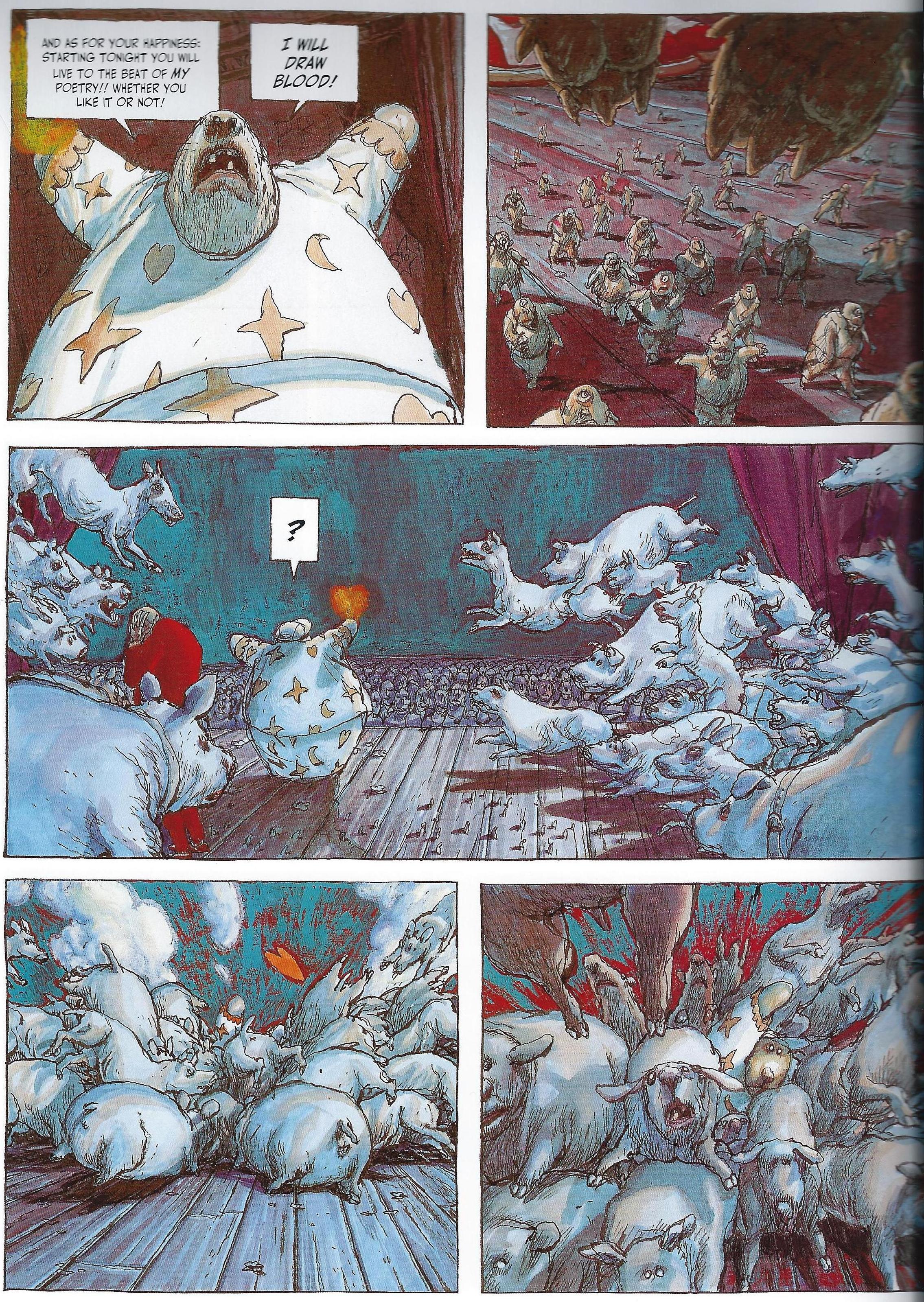
The story of Diego, a silent seal, who is pounced upon as a Chosen One the moment he sets foot in the fictional metropolis of New-York-On-The-Seine. The Devil and his minions battle The President with his team of supposed beneficent educators to sieze Diego’s fate for their own purposes. Beautifully drawn and coloured, de Crécy’s works are always their own unique and fantastic realms, full of absurd humour and touching drama, drawing the reader in with their charm and mystery. Here humans – pompous professors and Satan’s scriptwriters – mix with anthropomorphic animals – our seal hero, lovestruck pigs, an enterprising cabal of dogs – in a tale as far-reaching as its title implies (‘Bibendum’ is the name of the Michelin Man). The story is told by the disembodied head of the gigantic Professor Lombax before being hijacked by Satan, and as the two vie for narrative control, an excellent post-modern commentary on the nature of writing itself emerges. Highly recommended.
Paris Soirees
(François Avril & Philippe Petit-Roulet, pub. Humanoids)
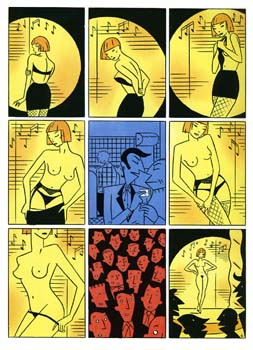
Black Paths
(David B., pub. SelfMadeHero)
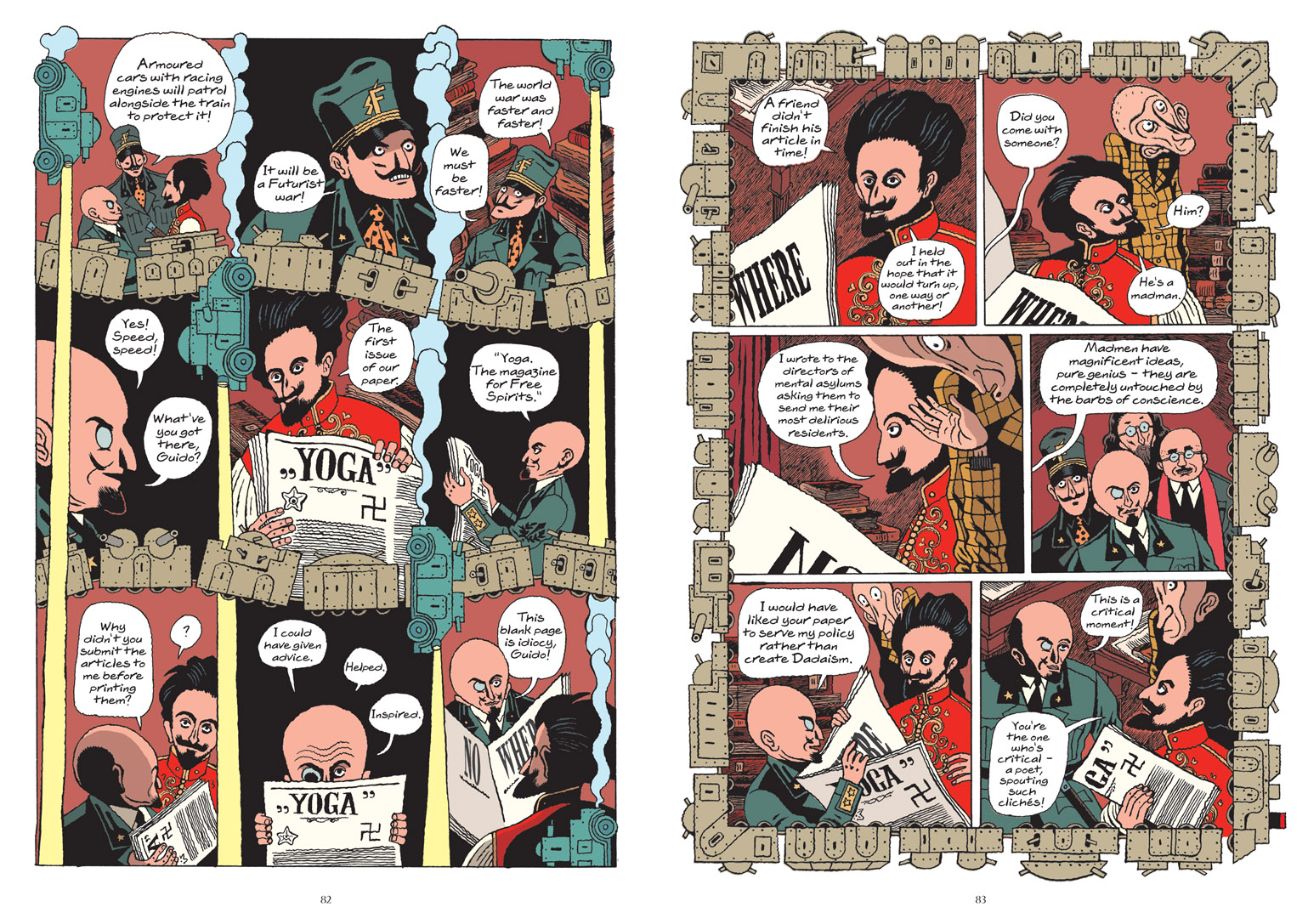
Pulsing with magic, chaos, and ghosts, Black Paths is the powerful story of a young soldier, Lauriano, looting, falling in love, and attempting to bury his past amidst the post-World War I pandemonium in Fiume. This Dalmatian port has been occupied by the fascist poet and military hero, Gabriele D’Annunzio, and 3000 supporters, in defiance of the Treaty of Versailles. Portrayed as more of a charismatic leader than a tyrant, D’Annunzio struggles to keep order amongst the disparate factions in his ranks, filled with fascists, yogis, Dadaists, and cocaine-fueled soldiers. The speed and violence of the Futurists is present in both the art and action of the novel, from the riot in its very first panels to its final phantasmal funeral festivities. Occult knowledge also permeates the book. One soldier remarks ‘I practiced magic and yoga all night long. They’re much more effective than drugs’ and D’Annunzio himself knows that ‘Naming is power!’ Indeed the power of words is attested to in a number of different ways, most touchingly when Lauriano’s lover Mina is left alone with his books. As the city spirals more and more out of control, Lauriano starts to believe in things he’s always dismissed before. I can’t recommend this book enough.
Sandcastle
(Frederik Peeters & Pierre Oscar Lévy, pub. SelfMadeHero)
This David Lynch-esque slice of literary science-fiction begins early one summer morning with the discovery of a dead body at a secluded beach. As the cast of 13 holidaymakers arrive for a day out in the sun, it quickly becomes apparent that something about the place isn’t right. While the children celebrate the newfound changes, the adults of the party attempt to come to terms with what is happening. But the tension grows unbearable as all efforts to escape or call for help are thwarted by forces unknown. Drawn in B&W, the abundance of white space portrays an openness contrary to the claustrophobia; unsettling wide expanses reinforcing the inevitable horror within. A collaboration between French documentary director Pierre Oscar Lévy and Swiss graphic novelist Frederick Peeters, Sandcastle won Best Science Fiction Graphic Novel of 2011 at the prestigious Utopiales Science Fiction Festival in Nantes last November.
Night Glare
(Thomas Dowse/Sans Pareil, self-published)
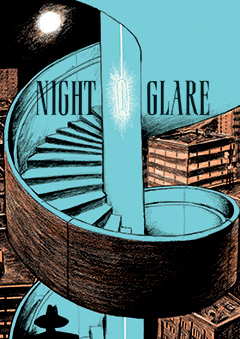
London outfit Sans Pareil have done something very cool indeed in releasing Night Glare, a comic and record, two inseparable parts of the same whole. Beautifully printed, showing the amount of care that went into the project, the book is mostly half and full-page panels filled with sex, despair, and foreshadowings of death. The story of a disintegrating relationship, the couple still bound by dark ties to each other and the city’s seedy underworld. Bleak meditations are offset by spectral colour and David Lynchian sashays down near-deserted streets and through sordid nightclubs. You can hear this in the music too, half the songs setting this Lost Highway/Mulholland Drive mood whilst the others are reminiscent of the more melodic 80s American punk and hardcore bands (this wouldn’t be out of place on Dischord Records). Listen to the album at Sans Pareil’s Bandcamp page and more of guitarist/vocalist Thomas Dowse’s artwork can be seen at his website.
Urban Legends
(Steven Stone, pub.Markosia)
Review by Reggie Chamberlain-King
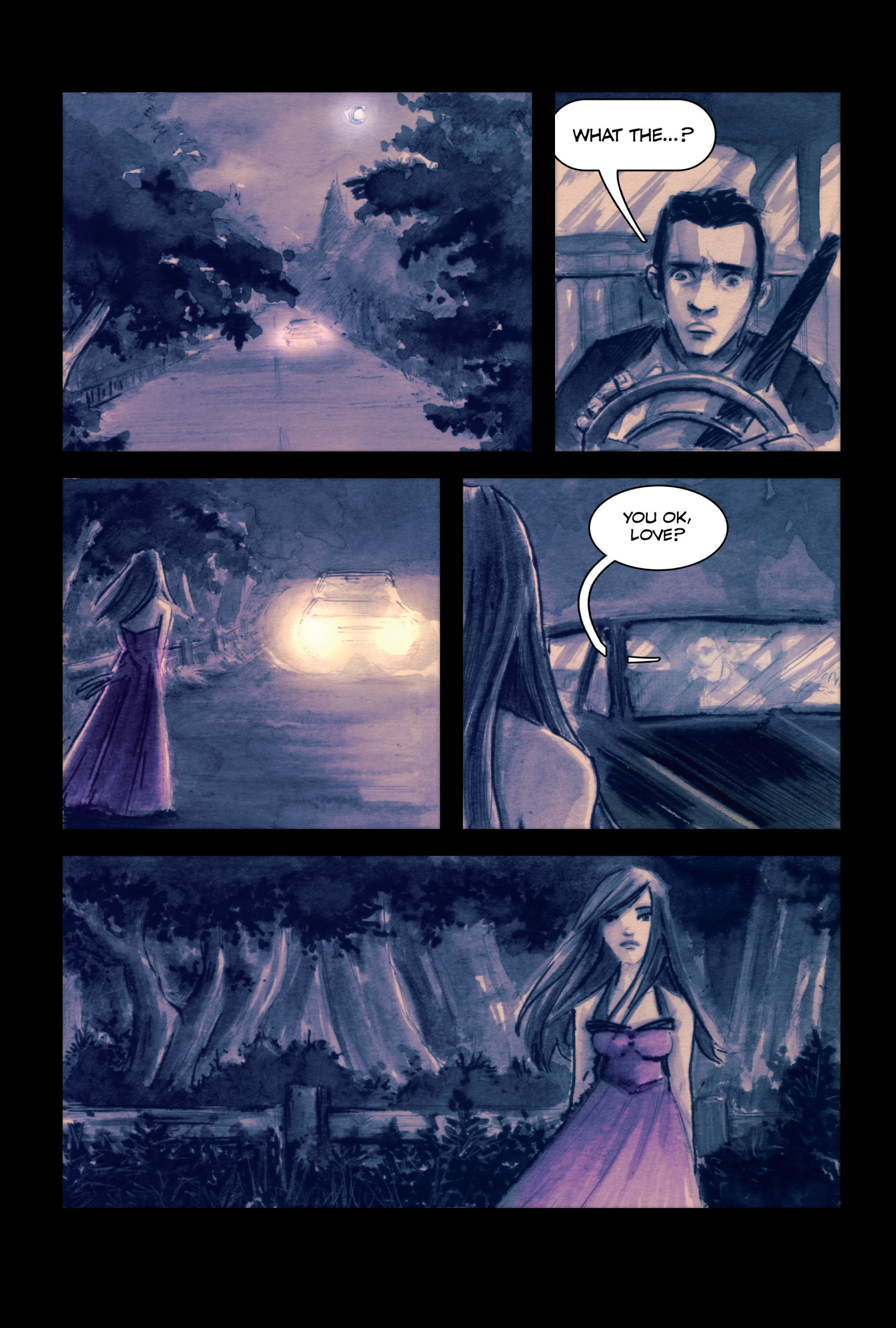
An urban legend is like a joke: it has a teller, set-up, and a punchline that turns everything on its ear. And the legend works best for being second-hand: narrator and listener are at such a remove as to find the gruesome atrocities and accidents merely titillating and to consider the dearth of joins and details no distraction. More importantly, we can rest assured that it never happened. To tell the tale without narrator or overarching narrative – as there is in the same-named film – is a risk: the stories are so short that it is hard to imbue person or place with character and, where they have attained genuine legendary status, the endings are no surprise. However, Stone states this anthology as his dream and takes the risk, a risk any dreaming writer would take: it allows – even demands – they employ a multitude of approaches in quick succession, with results that can be pleasingly mixed.
The lightness of the sources does a disservice, but, when he does create an unusual atmosphere, the lightness becomes ethereal: The Vanishing Hitchhiker is such a success, where the haunting inclusion of The Suffolk Miracle counterbalances what is betrayed by the title. The Last Letter too, after an overlong beginning, turns to horror with a gentle, deftness of touch. Of the artwork, Valia Kapaldi of The Vanishing Hitchhiker warrants special mention, as does Sijo Art Lapham’s ornamentation on p.1 of The Wrong Door. A funny arm or typo can be set aside over an obvious labour of love: in fact, the labour and love could each have been more, as, when Mr. Stone prologues at the end, his contextual notes make the stories themselves more enjoyable. Had the comics themselves been more illustrative than focal, the stories would have read all the richer.

